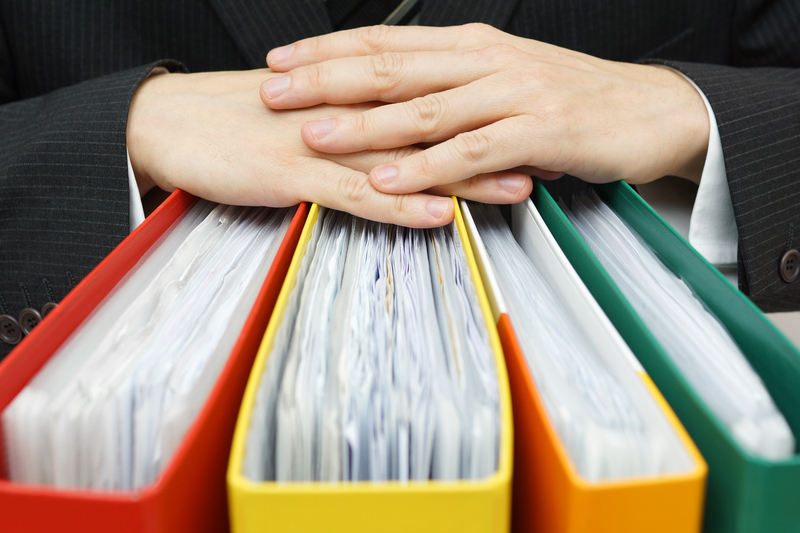Top Ways to Store Your Freezer and Avoid Surprises Later
Nothing is more disappointing than opening your freezer only to find a disorganized mess, freezer-burned food, or forgotten items past their prime. Organizing and storing your freezer effectively can save you money, minimize waste, and make meal planning a breeze. In this comprehensive guide, we'll cover the top ways to store your freezer so you can always find what you need--without any unpleasant surprises.

Why Proper Freezer Storage Matters
Proper freezer storage isn't just about neatness. Keeping your freezer organized and learning the best freezer storage methods can help you:
- Prevent food waste by knowing exactly what you have and using it in time.
- Maximize freezer space and store more items without overcrowding.
- Maintain food quality by preventing freezer burn and spoilage.
- Save money by avoiding unnecessary purchases of foods you already own.
- Make meal prep easier with visible, easy access to ingredients.
Common Freezer Storage Mistakes
Before diving into the best practices, recognize these frequent mistakes:
- Storing hot food directly in the freezer.
- Leaving food unwrapped or loosely packaged.
- Piling everything together without labels or order.
- Freezing items in unfreezable containers.
Avoiding these common pitfalls is the first step to storing your freezer efficiently and avoiding unexpected problems later.
1. Use the Right Containers for Freezer Storage
Choosing the proper containers is a major factor in successful freezer organization. Not all containers are freezer-safe--some materials can crack, warp, or let in air, causing freezer burn. The best containers for freezing food include:
- Heavy-duty freezer bags: Great for portioning soups, fruit, or meats. Squeeze out excess air to prevent ice crystals from forming.
- Airtight plastic containers: Use BPA-free containers with tight lids for leftovers, sauces, or homemade meals.
- Vacuum sealers: These devices remove air from packaging, giving food a longer freezer life and preventing freezer burn.
- Aluminum foil and freezer paper: Ideal for wrapping meats and baked goods.
- Glass containers (freezer-safe): Excellent for storing pre-cooked meals, but be sure they're labeled as freezer-safe to avoid shattering.
Label all containers with the date and contents so you can find things easily and use them before they expire.
2. Organize by Zones and Food Types
One of the top ways to store your freezer is to organize it by zones and food categories. This ensures you can grab what you need quickly and avoid leaving items buried and forgotten.
How to Set Up Freezer Zones
- Top shelf: Ready-to-eat items and leftovers.
- Middle shelf: Meats and seafood (keep these items in sealed containers to prevent cross-contamination).
- Bottom shelf: Bulk items, like frozen vegetables or pre-cooked grains.
- Door storage: Items with a short freezer life, like bread, nuts, and butter.
Tip: If you have a deep freezer chest, use stackable bins or crates to section off zones and make items in the bottom more accessible.
3. Practice FIFO (First In, First Out)
The FIFO method ensures you use your oldest freezer items first, avoiding forgotten food that gets freezer burned or goes bad. Here's how to apply it:
- Label every item with the date frozen. Consider using a permanent marker or printable labels.
- Place newer items behind or beneath older ones so you'll always reach for the oldest first.
- Regularly rotate contents and move older food forward.
Implementing FIFO is a simple yet powerful way to organize your freezer and avoid surprises later.
4. Prevent Freezer Burn
Freezer burn occurs when air comes into contact with your food, causing it to dehydrate and develop off-flavors. While it's still safe to eat, the taste and texture are compromised. Here are the best ways to prevent freezer burn:
- Cool food completely before freezing to prevent excess steam (and ice) inside packaging.
- Package food tightly in air-tight containers or use a vacuum sealer for best results.
- Fill containers almost to the top (but leave space for liquids to expand when freezing).
- Use freezer-safe wrap and double up on packaging for long-term storage.
- Don't open the freezer too often--keeping the temperature consistent prevents condensation and freezer burn.
5. Freeze Food in Smaller Portions
One of the most practical freezer storage techniques is portioning your food. Large blocks of frozen items take longer to defrost and are harder to organize. Instead, prepare food in meal-sized portions you'll use at one time.
- Divide large cuts of meat into single-use portions.
- Freeze soups and sauces in 1-cup servings for easy reheating.
- Use ice cube trays to freeze small amounts of pesto, broth, or baby food, then transfer cubes to freezer bags.
This not only saves freezer space but also makes meal prep simpler and helps reduce waste.
6. Maintain Freezer Temperature and Cleaning
Keep Your Freezer at the Right Temperature
The USDA recommends keeping your freezer at 0?F (-18?C) or below for optimal food safety and freshness. Always check your freezer's temperature with an appliance thermometer.
- Avoid overfilling your freezer, as this can restrict air flow and result in uneven freezing.
- If a power outage occurs, keep the freezer door closed--a full freezer will keep food frozen for 48 hours.
Regularly Defrost and Clean Your Freezer
- Schedule seasonal clean-outs every few months to discard expired or unidentifiable foods.
- Wipe down surfaces and remove frost build-up to maintain efficiency.
- Baking soda can be kept in a small open box to absorb odors.
7. Inventory Your Freezer Contents
Keeping a freezer inventory list helps you know exactly what you have on hand, so you never face mysterious surprises or duplicates.
- Use a whiteboard or chalkboard attached to the freeze
- Keep a notepad in a kitchen drawer or use a freezer inventory app on your phone.
- Update your list each time something is added or used up.
This practice helps you plan meals, save money, and avoid unnecessary purchases, keeping your freezer in top condition.
8. Package Foods for Easy Identification
Ever found a mysterious, unlabeled block of food in your freezer? Avoid this by clearly labeling every package with:
- Name of the item
- Date frozen
- Portion size (if applicable)
- Cooking or reheating instructions (especially helpful for casseroles and assembled dishes)
Use a permanent marker, waterproof labels, or freezer tape to ensure the information stays readable over time.
9. Use Upright and Stackable Storage Solutions
Vertical storage (rather than piling things flat on top of each other) makes accessing and organizing your freezer much easier. Try:
- Wire racks or bins for grouping like items together.
- Stackable containers to maximize space.
- Magazine organizers or file sorters for freezer bag storage on end.
Organizing upright not only saves space but minimizes time searching for what you need, leading to fewer surprises.
10. Know the Freezer Life of Your Foods
Even in the freezer, food doesn't last forever. Here are some common freezer foods and their recommended storage times:
- Raw poultry: Up to 12 months
- Raw red meat: 4-12 months
- Fish and seafood: 3-6 months
- Cooked leftovers: 2-3 months
- Bread and pastries: 2-3 months
- Vegetables: 8-12 months
- Fruit: 6-12 months
Always consult a trusted source for specific freezing guidelines to ensure food safety and quality.

Bonus Tips to Avoid Freezer Surprises
- Freeze flat: Store soups and stews in freezer bags laid flat to save room. Once solid, you can stand them upright.
- Freeze quick: Spread foods (like berries) on a tray before bagging so they don't stick together.
- Keep a defrosting calendar: Mark when you need to use up older foods before making new batches.
- Involve your family: Teach everyone your freezer system to ensure consistency and avoid surprises.
The Bottom Line: Smart Freezer Storage Means Fewer Surprises
Taking the time to organize your freezer, invest in the right storage materials, and consistently update your inventory yields huge benefits. Not only do you avoid unpleasant, forgotten freezer items, but you also save money, reduce waste, and simplify meal planning for the whole family.
By following these top ways to store your freezer, you ensure that everything you pull out--from meats and veggies to leftover casseroles--retains its best flavor and quality. No more surprises: just delicious, perfectly preserved food at your fingertips!



